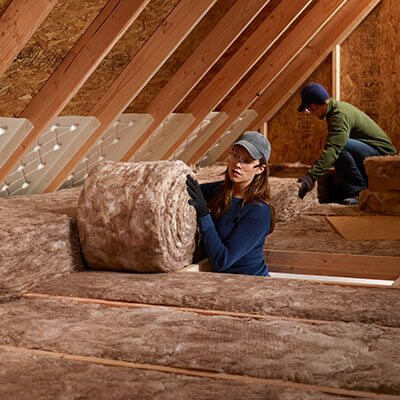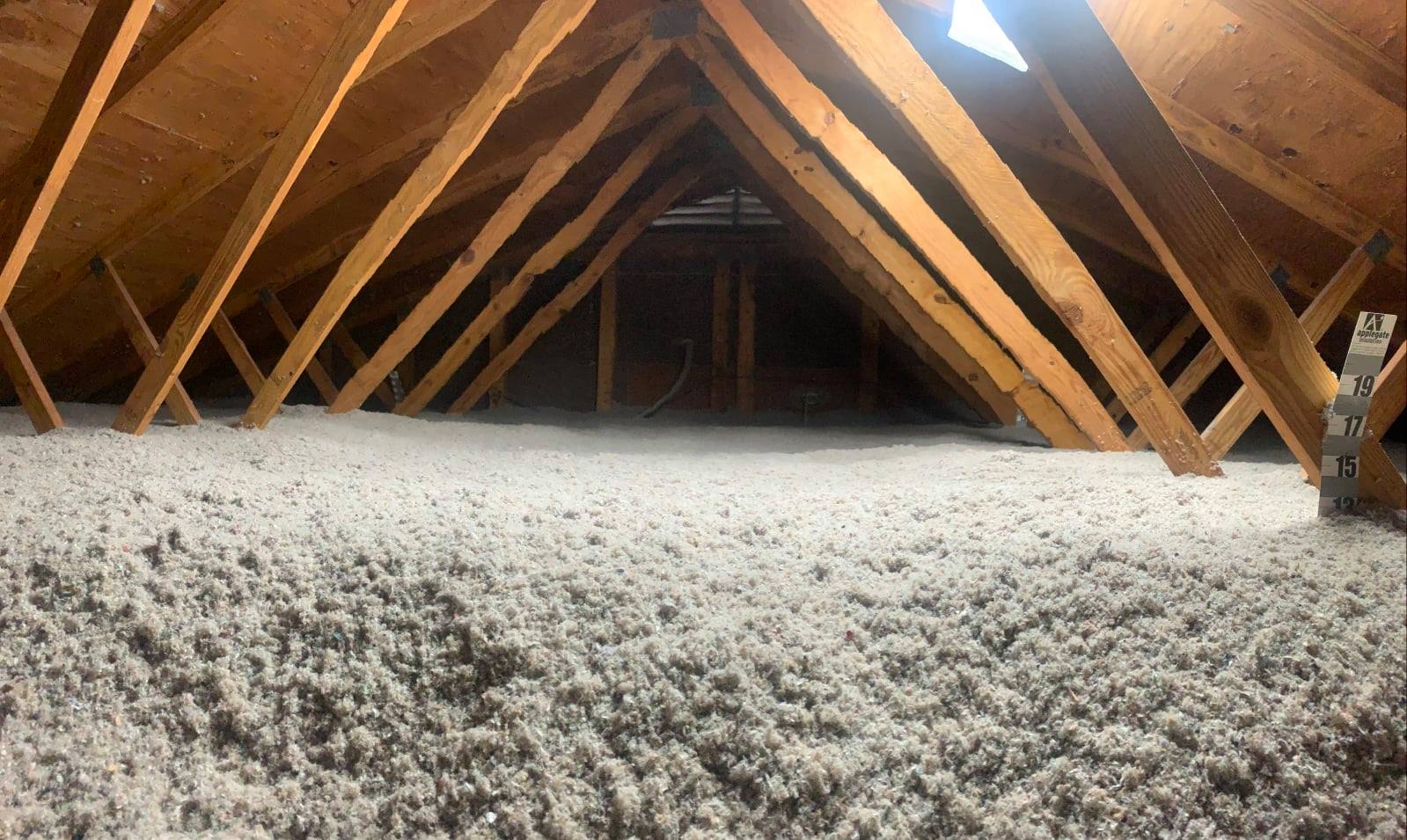Attic Insulation DFW: What You Required to Know Before Upgrading Your Insulation
Attic Insulation DFW: What You Required to Know Before Upgrading Your Insulation
Blog Article
Discover the Various Types of Attic Insulation and Their One-of-a-kind Benefits for Your Home's Power Efficiency

Fiberglass Insulation
Fiberglass insulation is among the most frequently used materials for attic room insulation as a result of its outstanding thermal efficiency and cost-effectiveness. Composed of tiny glass fibers, this material properly traps air, producing a shielding barrier that aids maintain constant interior temperature levels. Its high R-value per inch makes it specifically effective at standing up to heat transfer, which is important for energy preservation in homes.
Installation of fiberglass insulation is relatively simple, typically offered in batts or loose-fill types, fitting numerous attic room setups. Furthermore, it is non-combustible and resistant to moisture, decreasing the risk of mold and mildew development. This toughness adds to its durability, making fiberglass a feasible lasting financial investment for property owners.
Furthermore, fiberglass insulation is often manufactured from recycled materials, which improves its eco-friendliness. The product can also add to soundproofing, lessening noise transfer in between areas. While it is essential to wear protective gear during installment to prevent irritability from the fibers, the general advantages of fiberglass insulation, consisting of energy financial savings and ecological factors to consider, make it a popular choice for enhancing attic room performance and promoting a comfortable living setting.
Spray Foam Insulation
Spray foam insulation is a very reliable choice for attic insulation, understood for its exceptional air sealing and thermal efficiency. This cutting-edge insulation material is made up of a combination of isocyanate and polyol resin, which, when combined, broadens quickly to fill voids and tooth cavities in the attic area. Its ability to comply with numerous surfaces makes certain a constant barrier versus air leakages, considerably decreasing warm loss throughout chillier months and heat gain throughout warmer seasons.
Among the key advantages of spray foam insulation is its high R-value per inch, which means it gives outstanding thermal resistance in a reasonably slim application. This is specifically useful in attic rooms where space is typically restricted. Additionally, spray foam can aid lessen dampness build-up, lowering the danger of mold and mildew development, which can be detrimental to both the structure and interior air top quality.
While the preliminary cost of spray foam insulation might be greater than traditional choices, its long-lasting power savings, paired with enhanced convenience and enhanced home value, make it a rewarding financial investment for home owners seeking improved energy efficiency. Attic Insulation DFW. Generally, spray foam insulation sticks out as a reliable solution for enhancing attic room insulation
Cellulose Insulation

Cellulose insulation is a prominent option for attic insulation, mostly composed of recycled paper products treated with fire retardants. This eco-friendly choice is recognized for its excellent thermal performance, effectively minimizing heat transfer in both summer and cold weather. The dense make-up of cellulose enables it to load voids and gaps in attic room rooms, supplying a seamless obstacle versus air leakages.
Among the considerable benefits of cellulose insulation is its capacity to withstand mold and bugs, owing to the fire resistant therapies utilized throughout production. In addition, it boasts a high R-value per inch, which equates right into superior energy performance. Home owners can expect lower heating & cooling prices as a result of improved insulation.
Installment is normally completed via blowing loosened cellulose into the desired location, permitting a reliable and quick process. This technique also reduces disturbance to the existing structure. In addition, cellulose insulation has a relatively reduced environmental influence, as its manufacturing procedure utilizes recycled materials, adding to sustainable structure techniques.
Rock Wool Insulation
Amongst the different alternatives for attic room insulation, rock wool, likewise referred to as mineral wool, sticks out due to its remarkable thermal and acoustic performance. Made from recycled or all-natural materials, rock wool is developed by melting rock and rotating it into fibers, leading to an item that provides excellent visit our website insulation residential or commercial properties.
Among the substantial advantages of rock woollen insulation is its high R-value, which shows its effectiveness in standing up to warm flow. This particular not just boosts power performance but also adds to keeping a comfortable interior temperature level year-round. Furthermore, rock woollen is naturally fire-resistant, making it a more secure option for homes as it can stand up to high over here temperature levels without melting or releasing toxic fumes.
In addition, rock wool insulation masters soundproofing abilities, efficiently minimizing sound transmission in between areas and from outdoors resources. This makes it an optimal choice for homeowners looking for a tranquil living environment. Rock wool is moisture-resistant, aiding to avoid mold and mildew development and keeping the architectural integrity of the attic area. Generally, rock wool insulation provides a detailed remedy for enhancing energy effectiveness, safety, and convenience in residential setups.
Radiant Barrier Insulation
Glowing obstacle insulation acts as an effective service for lessening warmth transfer in attics, specifically in warmer environments. This sort of insulation jobs by showing radiant warm far from living areas, thus reducing the amount of warm that enters a home during hot weather condition - Attic Insulation DFW. Commonly made up of an extremely reflective product, such as light weight aluminum foil, radiant obstacles are installed in attics, encountering the roofing, where they can obstruct inbound heat from the sunlight
The main benefit of glowing barrier insulation is its capability to reduced cooling expenses. By showing warm rather than absorbing it, radiant obstacles can assist keep a much more steady interior temperature, lowering the workload on air conditioning systems. This effectiveness translates right into lower energy expenses and raised convenience for property owners.
In enhancement to power cost savings, radiant barriers can additionally add to improved indoor air high quality. By reducing heat build-up, they aid decrease humidity levels, which can avoid mold and mildew development and improve general air circulation. When set up appropriately, glowing obstacle insulation can be a vital addition to dig this any energy-efficient home, making it a worthwhile factor to consider for property owners seeking to improve their attic room insulation technique.
Conclusion
Finally, comprehending the various kinds of attic insulation-- fiberglass, spray foam, cellulose, rock woollen, and radiant obstacles-- allows property owners to make enlightened decisions pertaining to energy performance. Each insulation type offers special benefits, such as exceptional thermal resistance, moisture administration, and audio attenuation. By picking the suitable insulation product, significant decreases in energy prices can be achieved, in addition to enhancements in interior convenience. Ultimately, the right option adds to a much more lasting living environment and advertises total power conservation.

In final thought, understanding the numerous types of attic insulation-- fiberglass, spray foam, cellulose, rock woollen, and radiant barriers-- makes it possible for house owners to make informed choices pertaining to power effectiveness.
Report this page